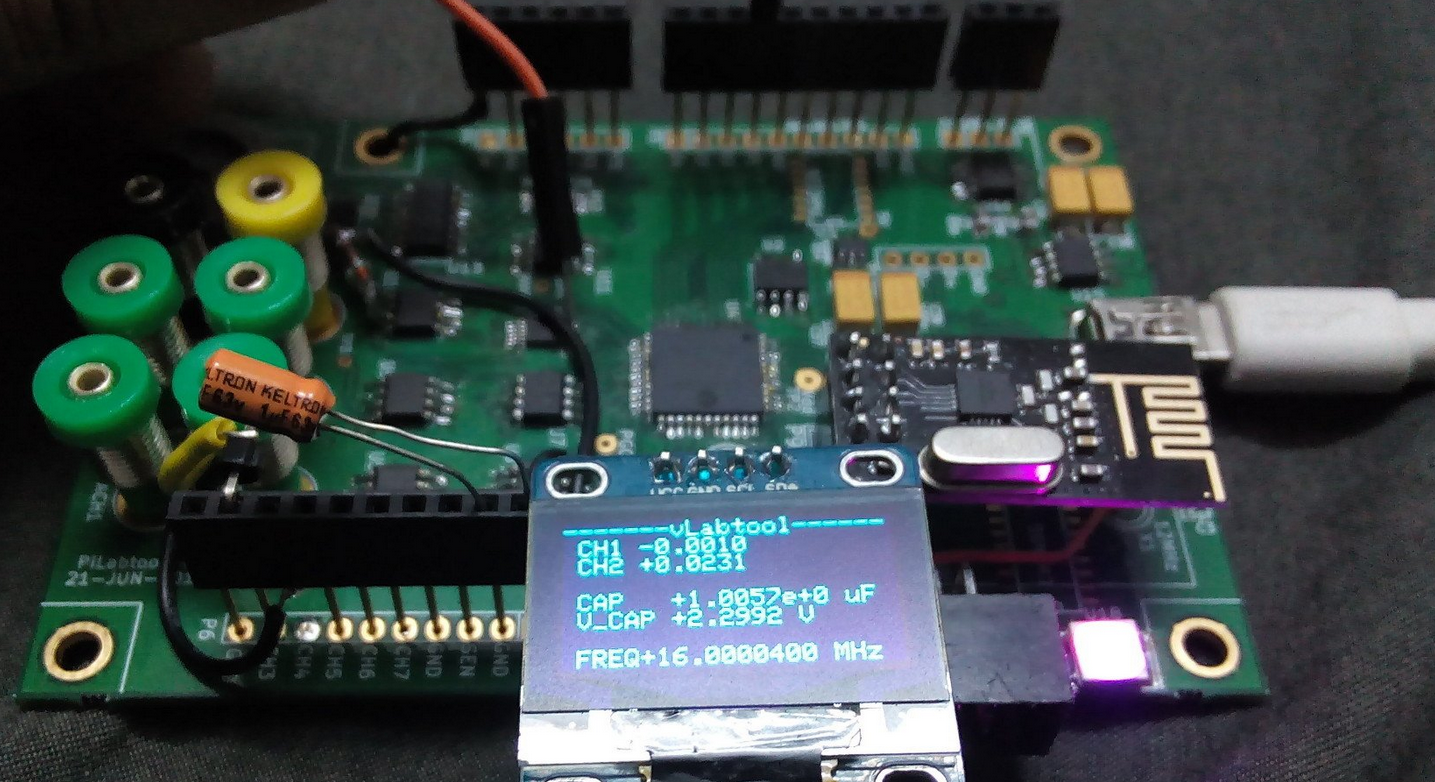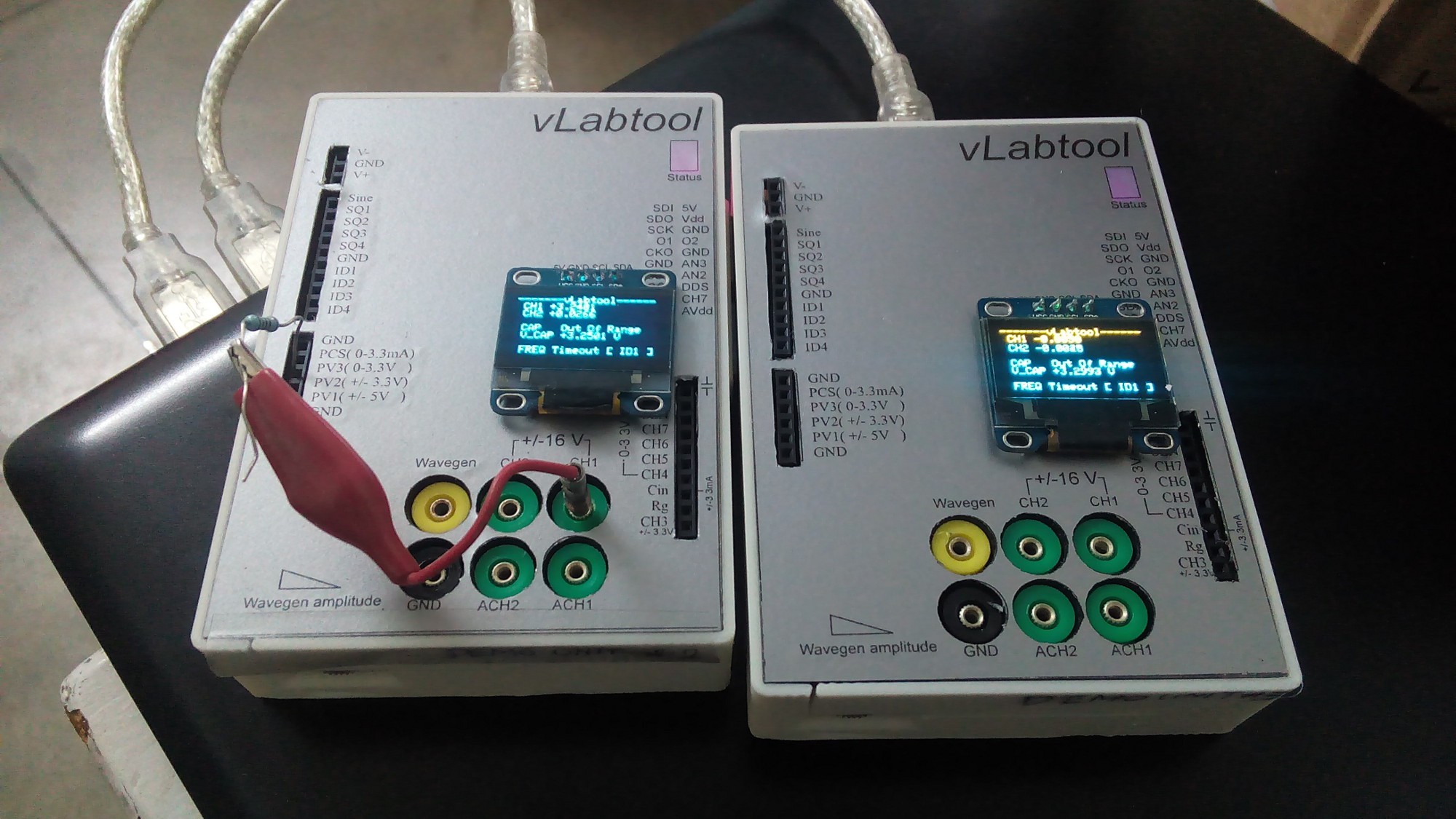https://hackaday.io/project/6490-a-versatile-labtool !
WHY?
The present form has several components that significantly add to the
cost, and may not be required by the majority of users. Many of these
can be provided in the form of add-on boards, thereby creating the need
for a modular design.
Most of the Add-on slots in the current state are separate Berg headers dedicated to specific data buses. Therefore, a unified, durable expansion port that supports all the available slots in addition to a few analog I/O has been implemented. Some remappable pins as well as the 16Mhz clock used by the DDS have been routed to the expansion slot.


Figure : Present state of development of the vLabtool. An optional standalone mode has been implemented.
I'm trying to meet the deadline for the Best Product prize, so it will be taking up all of my time.
The gist of differences is here. :
+ : BOM Less than $50 with component costs calculated with element14 prices.
+ : An optional standalone mode.
If the device detects an ssd1306 OLED plugged into an I2C slot during
boot-up, it displays a few readings until the PC takes over. This
allows it to be battery powered, and be made portable.
- : 4-channel oscilloscope reduced to 2-channel.
+ : 12-bit
offset control, and up to 32x gain for 8 analog inputs with various
input ranges. These include 2x +/-16V inputs, +/-2V input, I2V
convertor, Power supply ripple monitoring, and four unipolar inputs.
+ : NRF24L01+ transceiver added to base board. Firmware routines allow faster data transfer, and automatic node registration.
- : Inductance
to frequency converter removed. It can be easily redesigned as an
add-on board which also measures capacitance faster than the CTMU.
- : The AD9833 is pricey, and only one of them has been made part of the base board in the vLabtool.
+ : A 15KHz fixed amplitude sine wave generator has been added as compensation. It can be used in conjunction with the lone DDS for experiments such as amplitude modulation.
+ : A 2x10 pin expansion connector consisting of SPI, I2C, UART, 2xAnalog inputs, 16MHz output, raw output of the DDS , etc. A 4-pin, 3.5mm socket dedicated for I2C sensors is also included.
+ : 2.5ppm accuracy clock generator Fox925b. This provides much greater accuracy than the 30ppm crystals that were previously employed.
- : Several hundred banana sockets
- : TP4056 Li-ion charging IC. These are easily available as breakout boards, and may also be added to the wireless nodes at very little additional expense.
*ESP8266 continues to enjoy PCB real estate as an alternate communication channel.
-----------------------------------------------------------------------------------------------------------------------------------
 Jithin
Jithin
Discussions
Become a Hackaday.io Member
Create an account to leave a comment. Already have an account? Log In.